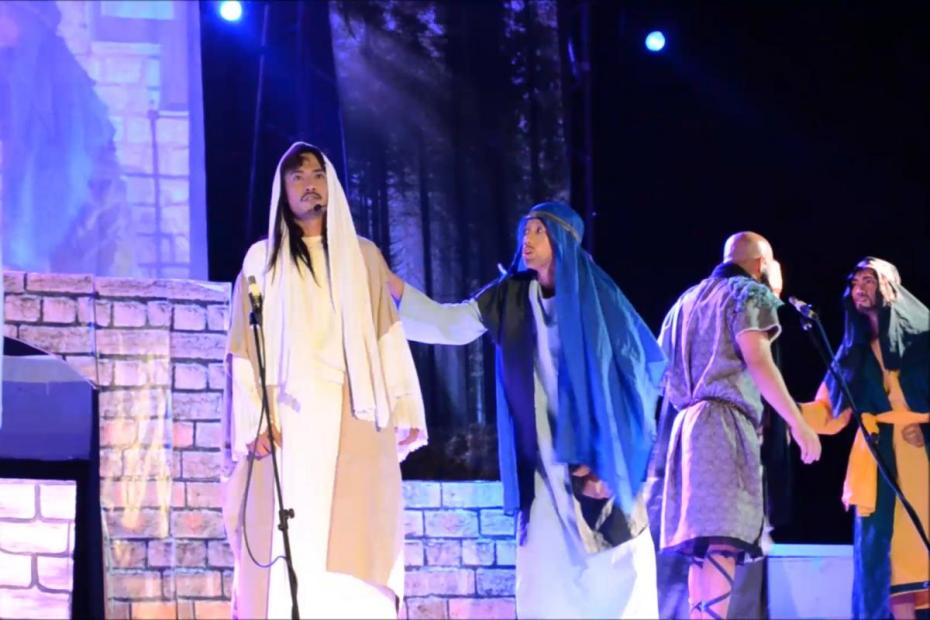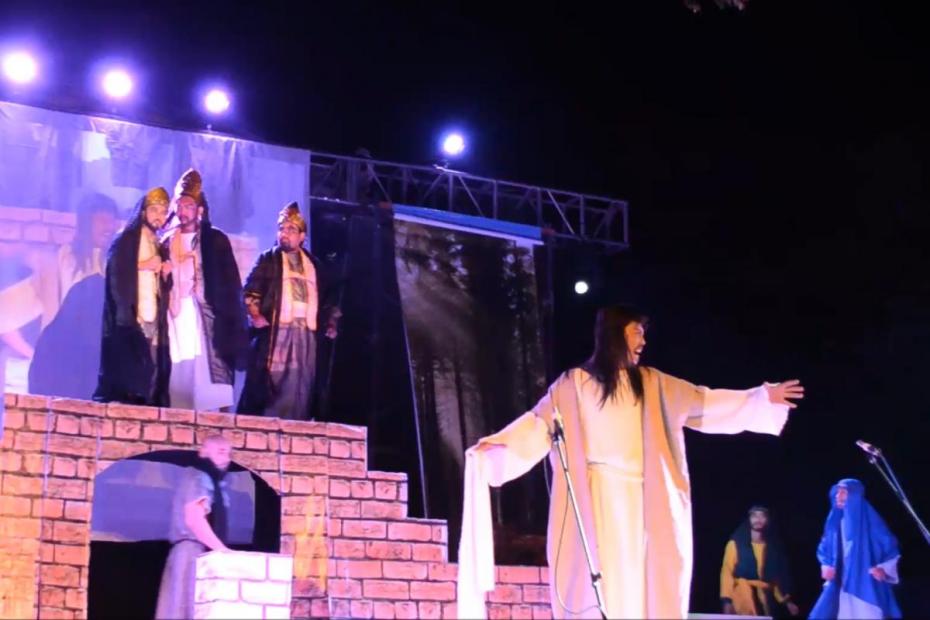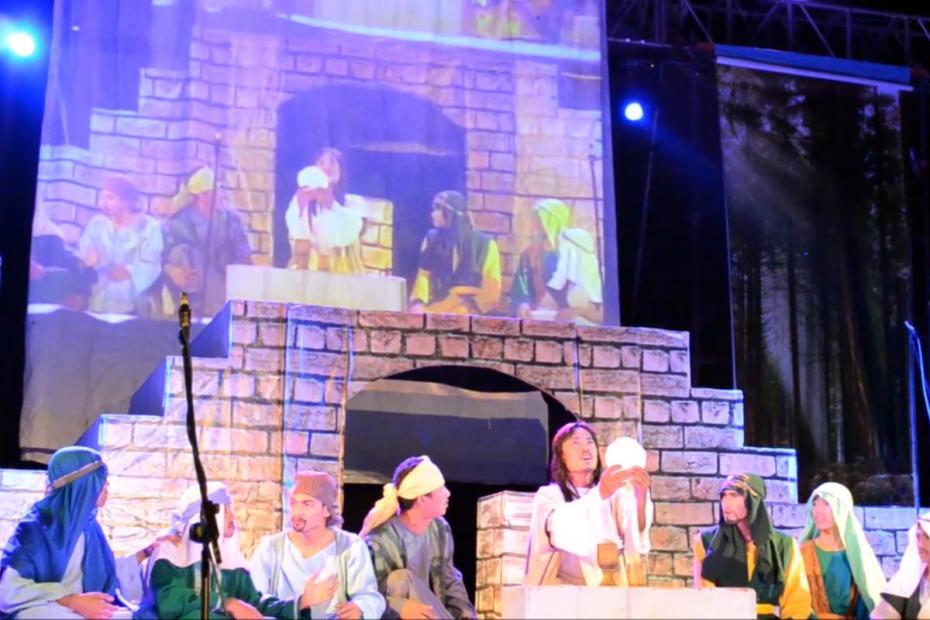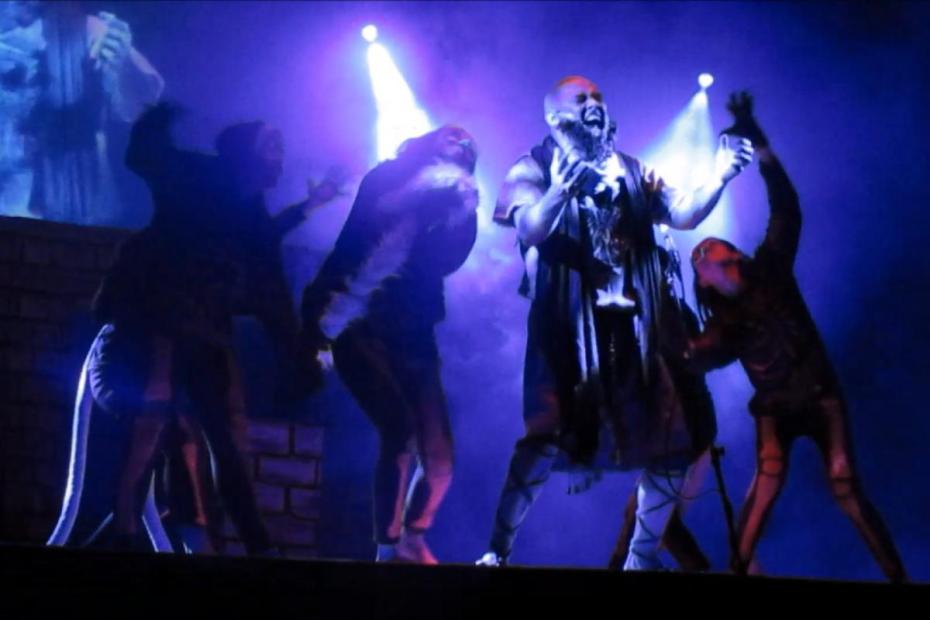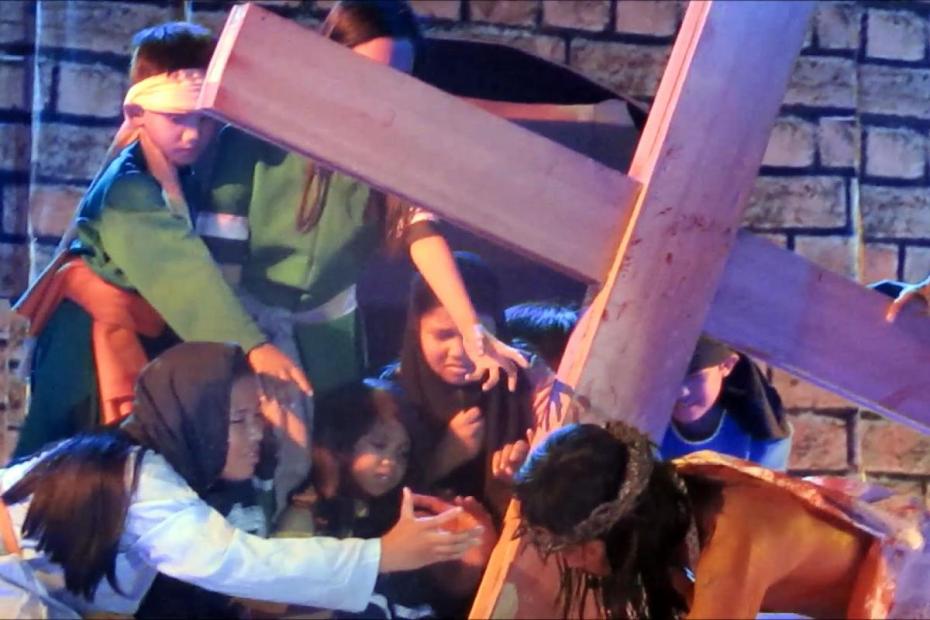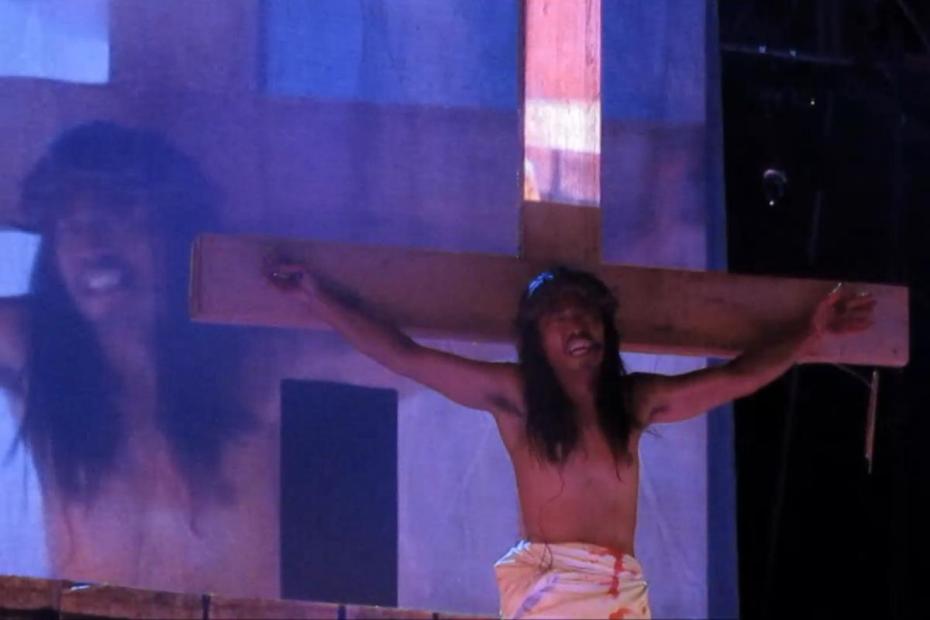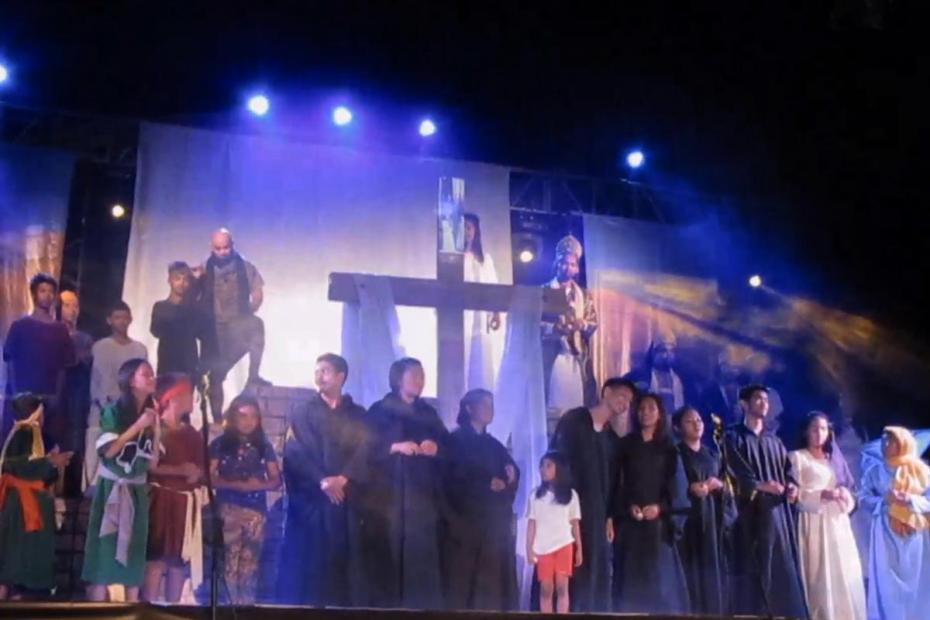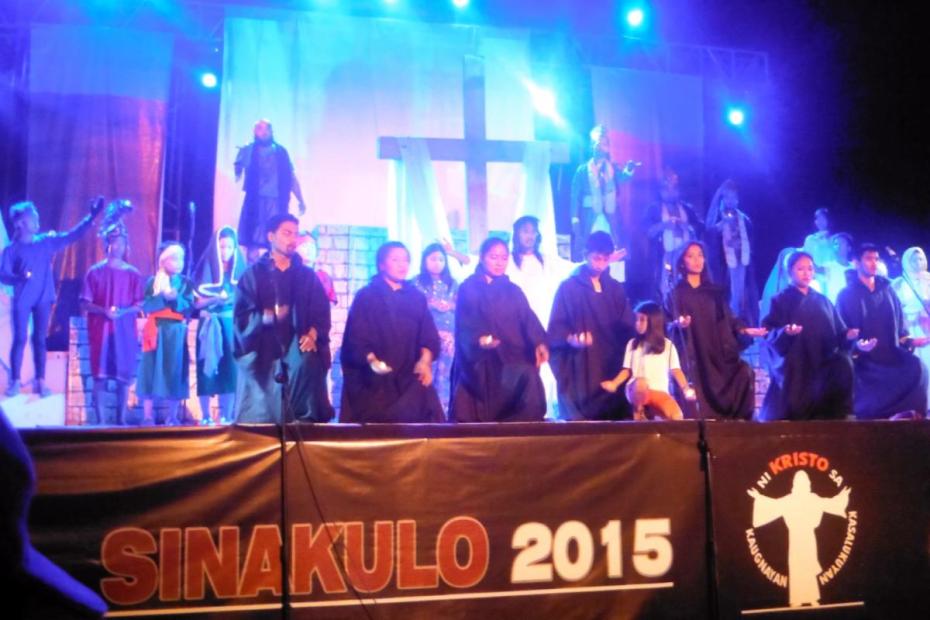Sometime during Holy Week, or even on several nights, a Senakulo — a stage or street play about the life and Passion of Jesus — takes place in many communities, especially in Bulacan, Rizal and Pampanga provinces.1 An outdoor Senakulo often parades a figure of Jesus carrying the Cross through the streets, and emphasizes the violence and brutality of Jesus’ persecutors. The bloody reenactment at San Pedro Cutud, San Fernando, Pampanga is the most graphic and infamous of these plays, but the style and interpretive message of the Senakulo varies.
A staging of Senakulo in Malolos, Bulacan, is performed nightly during Holy Week in various locations around the city. Though organized as the Dularawang Bulacan Foundation, it is also a family tradition: the current generation of Senakulistas (actors and actresses performing in the Senakulo) in this performance are sons, daughters and even grandchildren of elder members of the group, ranging in age from 7 to 40 years old. They receive no compensation. Production expenses are covered primarily by the local government, with help from local sponsors and donors.
A Senakulo (or Sinakulo) performed by the Dularawang Bulacan Foundation in Malolos, 2015.
During the Palm Sunday dress and technical rehearsal at the Mini Forest in Capitol Compound Malolos, Bulacan, the performance started at 8 p.m. with an opening narration about the theme chosen for that year: “Anong Ugnayan mo kay Kristo sa panahon ngayon?” “What is your personal relationship with Jesus Christ in your life today?” The two-hour Senakulo, which is free to attend, covered Jesus’s life from his baptism in the river Jordan to his Passion, death and Resurrection. The script changes. It is drawn primarily from the Bible, and to a smaller degree from older traditions, but also is inflected by the theme chosen for the year.
Since 1974, this group has performed 300 Senakulo, not only in Bulacan but also in Manila and in nearby provinces. They describe this as more than a performance, but as the fulfillment of a panata, or vow, a way of thanksgiving for favors asked and favors received.
Read more
N. Tiongson, "Kasaysayan At Estetika Ng Senakulo At Ibang Dulang Pangrelihiyon Sa Malolos. Ateneo" (De Manila University Press, 1995).
- 1In Tagalog it is sometimes spelled as Sinakulo as well. It derives from the Spanish word for Cenacle.
